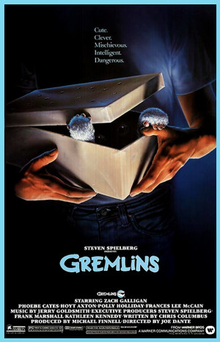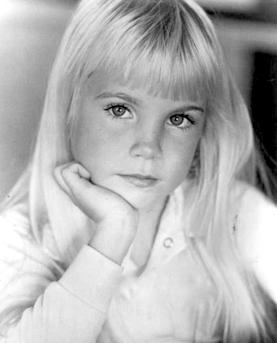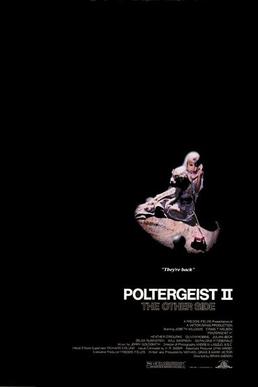
E.T. the Extra-Terrestrial is a 1982 American science fiction film produced and directed by Steven Spielberg and written by Melissa Mathison. It tells the story of Elliott, a boy who befriends an extraterrestrial, dubbed E.T., who is left behind on Earth. Along with his friends and family, Elliott must find a way to help E.T. find his way home. The film stars Dee Wallace, Henry Thomas, Peter Coyote, Robert MacNaughton and Drew Barrymore.

Close Encounters of the Third Kind is a 1977 American science fiction drama film written and directed by Steven Spielberg, starring Richard Dreyfuss, Melinda Dillon, Teri Garr, Bob Balaban, Cary Guffey, and François Truffaut. The film depicts the story of Roy Neary, an everyday blue-collar worker in Indiana, whose life changes after an encounter with an unidentified flying object; and of Jillian, a single mother whose three-year-old son was also abducted by a UFO.

Willard Tobe Hooper was an American filmmaker, best known for his work in the horror genre. The British Film Institute cited Hooper as one of the most influential horror filmmakers of all time.

Gremlins is a 1984 American fantasy comedy horror film directed by Joe Dante, written by Chris Columbus and starring Zach Galligan, Phoebe Cates, Hoyt Axton, Polly Holliday and Frances Lee McCain, with Howie Mandel providing the voice of Gizmo, the main mogwai character. It draws on legends of folkloric mischievous creatures that cause malfunctions—"gremlins"—in the British Royal Air Force going back to World War II. The story follows young man Billy Peltzer, who receives a strange creature as a pet, which then spawns other creatures that transform into aggressive imp-like monsters that wreak havoc on Billy's town during Christmas Eve.

Amblin' Entertainment, Inc., formerly named Amblin Productions, is an American film production company founded by director and producer Steven Spielberg, and film producers Kathleen Kennedy and Frank Marshall in 1980. Its headquarters are located in Bungalow 477 of the Universal Studios backlot in Universal City, California. It distributes all of the films from Amblin Partners under the Amblin Entertainment banner.

Heather Michele O'Rourke was an American child actress. She had her breakthrough starring as Carol Anne Freeling in the supernatural horror film Poltergeist (1982), which received critical acclaim and established her as an influential figure in the genre. She went on to reprise the role in Poltergeist II: The Other Side (1986) and Poltergeist III (1988), the last of which was released posthumously.

Melissa Marie Mathison was an American film and television screenwriter and an activist for the Tibetan independence movement. She was best known for writing the screenplays for the films The Black Stallion (1979) and E.T. the Extra-Terrestrial (1982), the latter of which earned her the Saturn Award for Best Writing and a nomination for the Academy Award for Best Original Screenplay.

Gremlins 2: The New Batch is a 1990 American fantasy comedy horror film and the sequel to the 1984 film Gremlins. It was directed by Joe Dante and written by Charles S. Haas, with creature designs by Rick Baker. Zach Galligan, Phoebe Cates, Dick Miller, Jackie Joseph and Keye Luke reprise their roles from the first film; Belinda Balaski also returns, this time playing a different character. New cast members include John Glover, Robert Prosky, Haviland Morris, Robert Picardo and Christopher Lee; additionally, the film features Tony Randall providing the voice for one of the gremlins. The story continues the adventures of the creature Gizmo, who spawns numerous small monsters when wet. In the first film, Gizmo's offspring rampaged through a small fictional town. In Gremlins 2: The New Batch, Gizmo multiplies within a skyscraper in New York City after his owner dies. The new creatures thus pose a serious threat to the city should they be able to leave the building and the story revolves around the human characters' efforts to prevent this disaster.

Joseph James Dante Jr. is an American film director, producer, editor and actor. His films—notably Gremlins (1984) alongside its sequel, Gremlins 2: The New Batch (1990)—often mix the 1950s-style B movie genre with 1960s radicalism and cartoon comedy.

The Howling is a 1981 American horror film directed and edited by Joe Dante. Written by John Sayles and Terence H. Winkless, based on the novel of the same name by Gary Brandner, the film follows a news anchor who, following a traumatic encounter with a serial killer, visits a resort secretly inhabited by werewolves. The cast includes Dee Wallace, Patrick Macnee, Dennis Dugan, Christopher Stone, Belinda Balaski, Kevin McCarthy, John Carradine, Slim Pickens, and Elisabeth Brooks.

Carlo Rambaldi was an Italian special effects and makeup effects artist. He was the winner of three Academy Awards: one Special Achievement Academy Award for Best Visual Effects in 1977 for the 1976 version of King Kong and two Academy Awards for Best Visual Effects in 1980 and 1983 for, respectively, Alien (1979) and E.T. the Extra-Terrestrial (1982). He is most famous for his work in those two last mentioned films, that is for the mechanical head-effects for the creature in Alien and the design of the title character of E.T. the Extra-Terrestrial. In 2017, he was inducted into the Visual Effects Society Hall of Fame.

Steven Spielberg is an American director, producer and writer. He is considered one of the founding pioneers of the New Hollywood era, as well as one of the most popular directors and producers in film history. He is also one of the co-founders of Amblin Entertainment, DreamWorks Pictures, and DreamWorks Animation.
The Kelly–Hopkinsville encounter was a claimed close encounter with extraterrestrial beings that occurred near the communities of Kelly and Hopkinsville in Christian County, Kentucky, United States during the night and early morning of August 21-22, 1955. UFOlogists regard it as one of the most significant and well-documented cases in the history of UFO incidents, while skeptics maintain there was no real physical evidence of the encounter and the reports were due to "the effects of excitement" and misidentification of natural phenomena such as meteors and owls. The United States Air Force classified the alleged incident as a hoax in the Project Blue Book files.

Poltergeist is a 1982 American supernatural horror film directed by Tobe Hooper and written by Steven Spielberg, Michael Grais, and Mark Victor from a story by Spielberg. It stars JoBeth Williams, Craig T. Nelson, and Beatrice Straight, and was produced by Spielberg and Frank Marshall. The film focuses on a suburban family whose home is invaded by malevolent ghosts that abduct their youngest daughter.

Poltergeist II: The Other Side is a 1986 American supernatural horror film directed by Brian Gibson. JoBeth Williams, Craig T. Nelson, Oliver Robins, Heather O'Rourke and Zelda Rubinstein reprised their roles from the first film. New cast members include Will Sampson, Julian Beck and Geraldine Fitzgerald. The second entry in the Poltergeist film series and a direct sequel to Poltergeist (1982), it follows the Freeling family who again finds themselves under attack from the supernatural forces led by "the Beast", revealed to be the spirit of an insane preacher who led an apocalyptic cult during the 19th century, attempting to claim their daughter. In their efforts to save their daughter, the family finds help in a Native American shaman.
Firelight is a 1964 American science fiction adventure film written and directed by Steven Spielberg at the age of 17. Made on a budget of $500, the film was shown at a local cinema and generated a profit of $1. "I counted the receipts that night", Spielberg has recalled, "And we charged a dollar a ticket. Five hundred people came to the movie and I think somebody probably paid two dollars, because we made one dollar profit that night, and that was it."
The Alien was an unproduced Indian-American science fiction film in development in the late 1960s which was eventually cancelled. It was to be directed by Indian filmmaker Satyajit Ray and co-produced by Columbia Pictures. The script was written by Ray in 1967, loosely based on Bankubabur Bandhu, a Bengali science fiction story he had written in 1962 for Sandesh, the Ray family magazine, which gained popularity among Bengalis in the early 1960s. Bankubabur Bandhu was eventually adapted into a television film by Satyajit Ray's son Sandip Ray, and a play by the theatre group Swapnasandhani Kaushik Sen, in 2006.

The following is a list of unproduced Steven Spielberg projects in roughly chronological order. During his long career, American film director Steven Spielberg has worked on a number of projects which never progressed beyond the pre-production stage under his direction. Some of these projects fell in "development hell" or were officially canceled, some were turned over to other production teams, and still others never made it past the speculative stage.

E.T. is a fictional character and the titular extraterrestrial from Steven Spielberg's 1982 film of the same name. Created by Spielberg and the film's screenwriter Melissa Mathison, E.T. seeks the help of a boy named Elliott who, along with his friends and family, find a way to help E.T. return home. Since the film's release, the character has been and continues to be widely assessed as one of the greatest science fiction film characters of all time and is considered an icon of the genre. The character has also appeared in all of its other media, including books, video games, a theme park attraction and a short film sequel.
The following is a list of unproduced Tobe Hooper projects in roughly chronological order. Over the course of his career, American film director Tobe Hooper had worked on a number of projects which never progressed beyond the pre-production stage under his direction. Some of these projects fell into "development hell" or were officially cancelled, while others were taken over and completed by other filmmakers.















